|
Books Should Be Free Loyal Books Free Public Domain Audiobooks & eBook Downloads |
|
|
Books Should Be Free Loyal Books Free Public Domain Audiobooks & eBook Downloads |
|
Fiction |
|---|
|
Book type:
Sort by:
View by:
|
By: Victor G. Durham (1862?-1925?) | |
|---|---|
 Submarine Boys' Trial Trip
Submarine Boys' Trial Trip
The torpedo submarine's inventor, Jack Farnum, is looking for investors to help him kick his new shipyard into high gear. He already has his crew set, with sixteen year old Jack Benson as the captain, and his friend Hal Hastings running the engines. But, there may be some changes to the crew of the Pollard on the horizon. | |
 Submarine Boys' Lightning Cruise
Submarine Boys' Lightning Cruise
Captain Jack Benson and Hal Hastings have been sailing in torpedo submarines a while now. But, there is new danger that they will have to get used to, having the actual torpedoes onboard! They will be trying out a new boat, named after Hal, with the Navy watching closely. But trouble is always close by. (Ann Boulais) | |
 Submarine Boys and the Spies
Submarine Boys and the Spies
It is a wonderful December day in Spruce Beach, FL, and everyone is waiting, waiting for something special that has been promised. The "Benson", the fast submarine built by the Pollard Submarine Boat Company, is set to arrive. But, there are more people who are interested in the "Benson" than those picnicking on the beach. Who could they be? (Ann Boulais) | |
By: Victor Hugo (1802-1885) | |
|---|---|
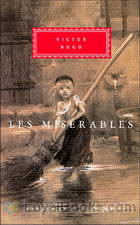 Les Misérables
Les Misérables
Victor Hugo's Les Misérables is a novel which tells the story of ex-convict Jean Valjean, his struggles and eventual redemption. It's hailed by many critics as not just Victor Hugo's finest work but also one of the best French novels of all time. Like most epic novels written in the 19th century, the storyline of Les Misérables spans through several decades beginning in the early 1800s and culminating in the 1832 June Rebellion in Paris. The events related to the lives of the central characters in the novel are also tied to the great historical events of the time from the French Revolution to the June Rebellion... | |
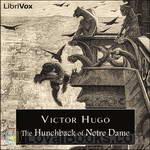 The Hunchback of Notre Dame
The Hunchback of Notre Dame
One of the great literary tragedies of all time, The Hunchback of Notre Dame features some of the most well-known characters in all of fiction - Quasimodo, the hideously deformed bellringer of Notre-Dame de Paris, his master the evil priest Claude Frollo, and Esmeralda, the beautiful gypsy condemned for a crime she did not commit. | |
 Toilers of the Sea
Toilers of the Sea
This is the story of a man’s monumental struggle against nature, to win the hand of the woman he loves, and surmount every difficulty that Nature puts in his path | |
 The Man Who Laughs
The Man Who Laughs
The Man Who Laughs is a novel by Victor Hugo, originally published in April 1869 under the French title L'Homme qui rit. Also published under the title "By Order of the King". (Introduction by Wikipedia) | |
 The Last Day of a Condemned
The Last Day of a Condemned
A man who has been condemned to death writes down his cogitations, feelings and fears while he is waiting for his execution. He does not betray his name to the reader or what he has done. He describes his life in prison, everything from what his cell looks like to the personality of the prison priest. (Introduction by Wikipedia) | |
 Hans of Iceland
Hans of Iceland
Hans of Iceland was written in 1821 and is the very first novel written by young Victor, years before he became the great Hugo. It has all the ingredients of a gothic novel: dreadful murders by the hand of a human monster, a young hero in love with the destitute heroine, royal court-intrigues and rebellious uprising, all set in dungeons, dark towers and the untamed nature of Norway.This audio-book has been recorded as Dramatic Reading with all the voices performed by one single reader, including laughs, sobs, groans, occasional screams and a lot of growls. I hope you will enjoy listening to this adventurous journey just as much as I enjoyed recording it. - Summary by Sonia | |
By: Violet Hunt (1862-1942) | |
|---|---|
 Last Ditch
Last Ditch
An amusing but deeply poignant story, “The Last Ditch” describes the wartime experiences of a British aristocratic family who gradually realize that their old feudal perquisites are passing away in the trenches of the Great War and that unprecedented new forces are pushing out the comfortable old ways. Lady Arles is the matriarch determined to resist to her last breath. Her bohemian young daughter Venice is set on a career as a poet and even dallies with a Socialist lover, but in some ways is the family member who seems the most helpless without her old aristocratic privileges... | |
By: Virginia Woolf (1882-1941) | |
|---|---|
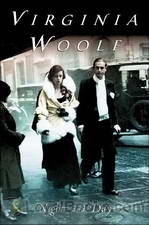 Night and Day
Night and Day
Virginia Woolf is one of the most influential and controversial feminine figures in the literary life of the London society. Night and Day is one of her first novels published in 1919 which displays the moral and spiritual issues that people confront. The author herself was an emotionally unstable person, her episodes of mental illness and suicidal depression being recurrent and always brought into the public attention. The novel revolves around the life of the main character, Katherine Hilbery, a superb girl, free spirited and living in her twenties... | |
 The Voyage Out
The Voyage Out
The Voyage Out is the first novel by Virginia Woolf, published in 1915 by Duckworth; and published in the U.S. in 1920 by Doran. One of Woolf's wittiest social satires.Rachel Vinrace embarks for South America on her father's ship and is launched on a course of self-discovery in a kind of modern mythical voyage. The mismatched jumble of passengers provide Woolf with an opportunity to satirize Edwardian life. The novel introduces Clarissa Dalloway, the central character of Woolf's later novel, Mrs... | |
 Jacob's Room
Jacob's Room
The novel centers, in a very ambiguous way, around the life story of the protagonist Jacob Flanders, and is presented entirely by the impressions other characters have of Jacob [except for those times when we do indeed get Jacob's perspective]. Thus, although it could be said that the book is primarily a character study and has little in the way of plot or background, the narrative is constructed as a void in place of the central character, if indeed the novel can be said to have a 'protagonist' in conventional terms. Motifs of emptiness and absence haunt the novel and establish its elegiac feel. | |
 Monday or Tuesday
Monday or Tuesday
Adeline Virginia Woolf was an English author, essayist, publisher, and writer of short stories, regarded as one of the foremost modernist literary figures of the twentieth century. During the interwar period, Woolf was a significant figure in London literary society and a member of the Bloomsbury Group. Her most famous works include the novels Mrs. Dalloway (1925), To the Lighthouse (1927), and Orlando (1928), and the book-length essay A Room of One's Own (1929), with its famous dictum, "A woman must have money and a room of her own if she is to write fiction... | |
By: Vladimir Korolenko (1853-1921) | |
|---|---|
 Blind Musician
Blind Musician
In this sketch, called by Korolenko “a psychological study,” the author has attempted to analyze the inner life of the blind. He has undertaken to lay before the reader not only the psychological processes in the mind of the blind, but their suffering from the lack of sight as well, uncomplicated by any untoward circumstances. To accomplish this he has placed his hero in most favorable, nay, almost exceptional conditions. The subjects for this study are a blind girl, whom the author had known as a child; a boy, a pupil of his, who was gradually losing his sight; and a professional musician, blind from his birth, intellectually gifted, scholarly, and refined. | |
By: Voltaire (1694-1778) | |
|---|---|
 Zadig, or the Book of Fate
Zadig, or the Book of Fate
Zadig, ou La Destinée, (”Zadig, or The Book of Fate”) (1747) is a famous novel written by the French Enlightenment philosopher Voltaire. It tells the story of Zadig, a philosopher in ancient Babylonia. The author does not attempt any historical accuracy, and some of the problems Zadig faces are thinly disguised references to social and political problems of Voltaire’s own day. The book is philosophical in nature, and presents human life as in the hands of a destiny beyond human control. It is a story of religious and metaphysical orthodoxy, both of which Voltaire challenges with his presentation of the moral revolution taking place in Zadig himself... | |
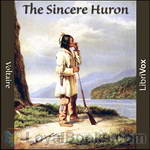 The Sincere Huron
The Sincere Huron
L’Ingénu is a satirical novella by the French writer Voltaire, published in 1767. It tells the story of a Huron Indian transported to the sophistication of eighteenth century Paris, and satirizes religious doctrine, as well as the folly and injustices of French society. | |
By: W. F. Harvey (1885-1937) | |
|---|---|
 Beast With Five Fingers
Beast With Five Fingers
A well off English bachelor receives a legacy from his uncle. This includes the uncle's very large library and a box containing something that used to belong to his uncle. The box has air holes in it. It is not a rat or other small mammal for his collection, but it is something still alive; something very malevolent and something very evil. | |
By: W. M. Flinders Petrie | |
|---|---|
 Egyptian Tales, translated from the Papyri, Series One
Egyptian Tales, translated from the Papyri, Series One
Brief, and in some cases incomplete, stories of magic from ancient Egypt. | |
By: W. S. Gilbert (1836-1911) | |
|---|---|
 The Bab Ballads
The Bab Ballads
The Bab Ballads are a collection of light verse by W. S. Gilbert, illustrated with his own comic drawings. Gilbert wrote the Ballads before he became famous for his comic opera librettos with Arthur Sullivan. In writing the Bab Ballads, Gilbert developed his unique “topsy-turvy” style, where the humour was derived by setting up a ridiculous premise and working out its logical consequences, however absurd. The Ballads also reveal Gilbert’s cynical and satirical approach to humour. They became famous on their own, as well as being a source for plot elements, characters and songs that Gilbert would recycle in the Gilbert and Sullivan operas... | |
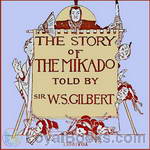 The Story of the Mikado
The Story of the Mikado
The Mikado is the ninth of the 14 Gilbert and Sullivan musical collaborations. It opened in 1885, had the second longest run for any work of musical theatre of the time, and remains the most frequently performed Gilbert and Sullivan. It was adapted as a children's book by W. S. Gilbert entitled The Story of The Mikado, which was Gilbert's last literary work (and published posthumously). It is a retelling of The Mikado, with various changes to simplify language or make it more suitable for children... | |
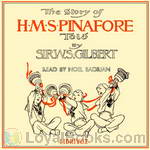 The Story of the H.M.S. Pinafore
The Story of the H.M.S. Pinafore
H.M.S. Pinafore; or, The Lass That Loved a Sailor, is a comic opera in two acts, with music by Arthur Sullivan and a libretto by W. S. Gilbert. It opened in London, England, on 25 May 1878 and ran for 571 performances, which was the second-longest run of any musical theatre piece up to that time. H.M.S. Pinafore was Gilbert and Sullivan's fourth operatic collaboration and their first international sensation. This is not that opera.It was adapted as a children's book by W. S. Gilbert entitled The Story of HMS Pinafore, or The Pinafore Picture Book, and includes some lovely illustrations by Alice B... | |
By: W. Somerset Maugham (1874-1965) | |
|---|---|
 The Magician
The Magician
The Magician is a novel by British author W. Somerset Maugham, originally published in 1908. In this tale, the magician Oliver Haddo, a caricature of Aleister Crowley, attempts to create life. Crowley wrote a critique of this book under the pen name Oliver Haddo, where he accused Maugham of plagiarism. Maugham wrote The Magician in London, after he had spent some time living in Paris, where he met Aleister Crowley. The novel was later republished with a foreword by Maugham entitled A Fragment of Autobiography. (Wikipedia) | |
 Painted Veil
Painted Veil
This Maugham classic is set in England and Hong Kong and in a cholera --ridden Chinese village in the 1920's. A committed, principled, epidemiologist, Dr. Fane, falls in love with the beautiful, but vain and foolish, Kitty Garstin. She agrees to marry him only because she wishes to beat her sister to the altar. She soon commits adultery with a British official in Hong Kong, where they have relocated. Dr. Fane decides that she must accompany him to a small village, deep within China, where cholera is rampant; otherwise, he will reveal the betrayal, with grave consequences for all... | |
 Mrs. Craddock
Mrs. Craddock
“I thought it was you I saw coming up the hill,” she said, stretching out her hand. He stopped and shook it; the touch of his big, firm fingers made her tremble. His hand was massive and hard as if it were hewn of stone. She looked up at him and smiled. “Isn’t it cold?” she said. It is terrible to be desirous of saying all sorts of passionate things, while convention debars you from any but the most commonplace. (Excerpts from chapter 1.) | |
 Bishop's Apron
Bishop's Apron
"Canon Spratte saw himself as he thought others might see him: mediocre, pompous, self-assertive, verbose." Maugham could have added ambitious, hypocritical, and vain. In this engrossing social satire, Theodore Spratte, a cleric, motivated by an obsessive desire to be elevated to bishop, embellishes his family history and intrudes upon his son's and daughter's courtships. A reviewer in 1906 wrote, "The whole book is an admirable blend of cynical gaiety and broadly farcical comedy; it is the smartest and most genuinely humorous novel that the season has yet given us." -- Lee Smalley | |
By: W. W. Jacobs (1863-1943) | |
|---|---|
 The Monkey's Paw
The Monkey's Paw
An eerie supernatural story, The Monkey's Paw follows the White family as they come to realize that nothing in life comes without a price or at the simple push of a button. First published in 1902, the short story powerfully suggests that one should not interfere with the course of nature, as cheating fate can result in unforeseen consequences that leave one with more than they bargained for. Set in England, the tale opens on a dark and stormy night inside Laburnam Villa, home to Mr. and Mrs... | |
By: Wadsworth Camp (1879-1936) | |
|---|---|
 The Abandoned Room
The Abandoned Room
An enthralling locked room mystery, The Abandoned Room focuses on the mysterious circumstances under which Silas Blackburn has been murdered at The Cedars, an eerie and isolated country estate. The most obvious suspect to the murder is Bobby Blackburn, the victim’s grandson who seems to have the best motive for the murder, although he has no recollection of the fateful night. Furthermore, Camp integrates a vibrant array of characters, detailed description, supernatural occurrences, and a generous supply of suspense, which in turn build up the novel’s allure... | |
By: Waldemar Bonsels (1880-1952) | |
|---|---|
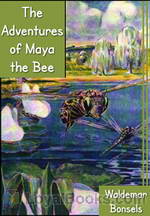 The Adventures of Maya the Bee
The Adventures of Maya the Bee
A little bee is born in a large and busy hive. At that time, the hive is going through a period of unrest and there are fears that it will become subdivided into separate colonies. The little new-born, Maya, is under the care of a strict but loving teacher. One day, driven by curiosity and rebellion, Maya escapes from the safe environs of the hive and flies into the forest. Here, she encounters all sorts of interesting, exciting, frightening and funny things. The Adventures of Maya the Bee is the story of the intriguing days that follow... | |
By: Walt Whitman (1819-1892) | |
|---|---|
 The Wound Dresser
The Wound Dresser
The Wound Dresser is a series of letters written from the hospitals in Washington by Walt Whitman during the War of the Rebellion to The New York Times, the Brooklyn Eagle and his mother, edited by Richard Maurice Burke, M.D., one of Whitman's literary executors. | |
 Life and Adventures of Jack Engle: An AutoBiography
Life and Adventures of Jack Engle: An AutoBiography
This story ran as a serial in 1852 in the New York Sunday Dispatch, and for more than 160 years was buried in obscurity, unknown to the world as novel written by Walt Whitman. Zachary Turpin, a graduate student specializing in Whitman's works, had seen in his notes a sketch of a novel including the characters Covert, Wigglesworth, Smytthe and Jack Engle, but no work including these characters had ever been found. After poring over endless pages of newspapers of the era however, Turpin found this advertisement for an upcoming serial: “A RICH REVELATION... | |
By: Walter Crane (1845-1915) | |
|---|---|
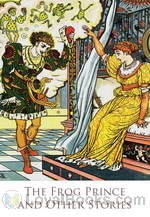 The Frog Prince and Other Stories
The Frog Prince and Other Stories
The three charming stories contained in The Frog Prince and Other Tales include a less-known fairy-tale called Princess Belle-Etoile besides the title story and Alladin and the Wonderful Lamp. Published in 1874, the tales are re-told by the famous illustrator Walter Crane, who has also provided some of the most lovely illustrations in the book. The book makes an ideal gift and both parents and children will certainly enjoy it. It's perfect for bedtime story-reading sessions and kids would love gazing at the beautiful Greek-style illustrations that are scattered throughout the book... | |